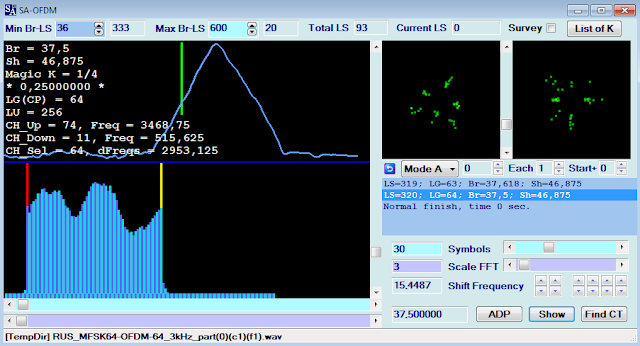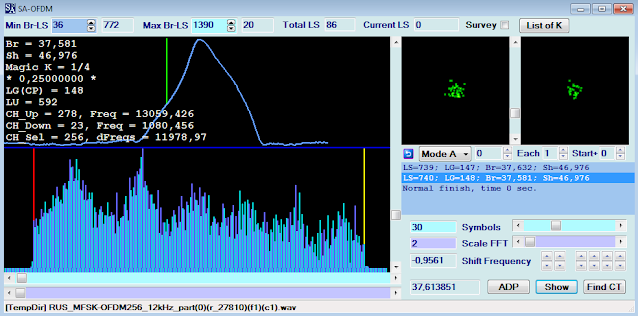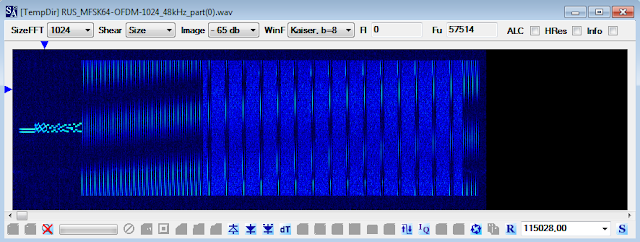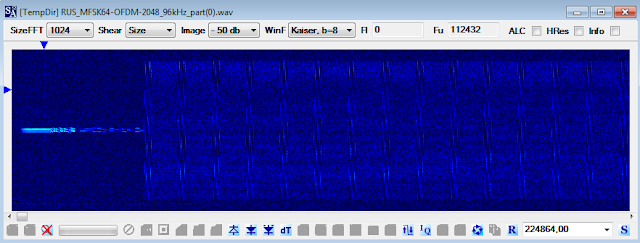Unid 16Kbps/16000 wideband FSK (WBFSK) heard and sent me by my friend Martin on 31875 KHz, just a bit beyond the limit of the HF region (LVHF). Notice in Figure 1 the sharp filtering at the edge of FSK transitions.
 | ||
| Fig. 1 |
The signal has strong 196 ms ACF spykes which are due to the inserted bursts limiting the blocks in which the transfer is arranged (Figure 2).
 |
| Fig. 2 |
The bitstream resulting after demodulation of part of the signal has a 3136-bit length framing, as expected since the 196 ms ACF, consisting of a 191-bit known sequence (the above mentioned inserted bursts) followed by 2945-bit of unknown data; the inserted burst are probably used for (re)synchronization purposes. Despite several runs, I did not find a valid LFSR for that sequence. Also note - zooming the bitstream - further 33 bits that could not be part of the following data block: this way it could be a 192-bit sequence followed by a 32-bit CRC... but it's only a mine speculation!
 |
| Fig. 3 |
Voice or data? The 16 Kbps speed and the way it sounds (like a white noise, to make it difficult to intercept) make me think of a vocoder. Indeed, in many VHF radio stations the analog speech signal is converted into digital form using CVSD (Continuous Variable Slope Delta) [1] just running at 16 kbit/s and then encrypted probably using a VINSON family crypto device such as KY-57/KY-58 [2].
L3Harris RF-7800H-MP could be a possible candidate among other radios since it allows both VHF WBFSK and CVSD vocoder.
Likely, the 191-bit (or 224-bit) inserts are not a CVSD specific feature but are added by the crypto device.
https://disk.yandex.com/d/MFoYcvA0pRjp4Q
[1] https://en.wikipedia.org/wiki/Continuously_variable_slope_delta_modulation
[2] https://en.wikipedia.org/wiki/VINSON


















